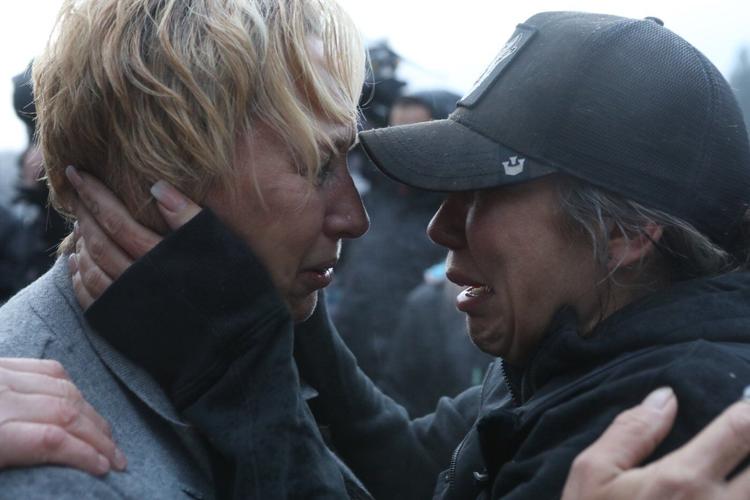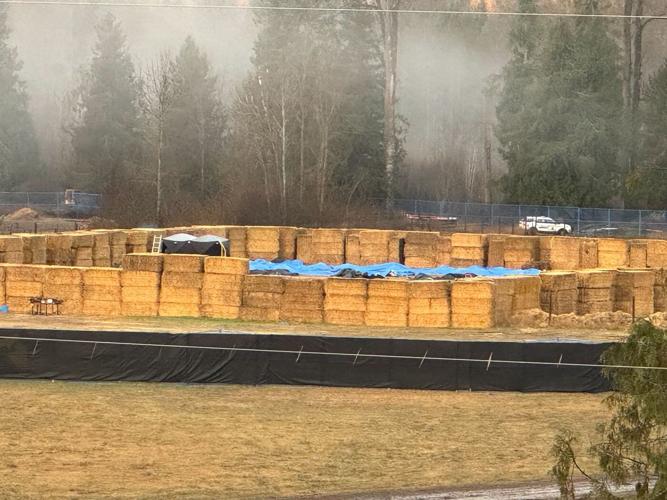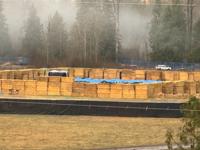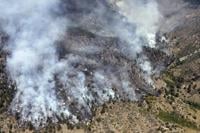EDGEWOOD, BRITISH COLUMBIA, CANADA - The şĂÉ«tv Food Inspection Agency says it has shot dead all ostriches at a British Columbia farm and is moving to the disposal phase of the operation to fulfil a 10-month-old cull order over an avian flu outbreak.
It said in a news release on Friday that a "professional marksman" was used as the "most appropriate and humane option" to complete the cull of hundreds of birds at the farm at Edgewood, B.C.
"This method is consistent with şĂÉ«tv Veterinary Medical Association and American Veterinary Medical Association recommendations and may be used as required, particularly when other methods are impractical," it said.
A holding pen where ostriches were herded into a day earlier was instead filled on Friday with tarpaulins that were pulled back in some parts to reveal piles of dead ostriches, and a utility vehicle with a front shovel was seen approaching the enclosure.
The shooting went on for hours on Thursday night, after the Supreme Court of Canada ruled earlier in the day that it would not hear the farmers' final appeal against the cull.
The farm's co-owner, Dave Bilinski, imagined the scene as a marksman shot down "on these defenceless animals … wounded birds down there all over the place."
He also worried about what was coming next for supporters of the farm who were shocked by the shootings.
"There are many supporters here that right now need mental health (support)," he said in an interview.Â
He said the CFIA should have had mental health workers "right here, right now."
The inspection agency, which numbered the flock at between 300 to 330 birds, said the shootings were completed under veterinary supervision.
"The CFIA has now started the disposal stage of the disease response," it said.
A CFIA manual on culling procedures, that the agency had previously said contained "best practices," describes shooting as a method of "last resort."
The owners of the farm had fought the cull order since it was issued on Dec. 31, losing at the Federal Court and the Federal Court of Appeal, while managing to stave off the killings with legal stays.Â
But at 6:45 a.m. on Thursday the Supreme Court of Canada announced it had declined to hear their final appeal, lifting any impediment to the cull.
The shooting began under darkness around 6 p.m., with multiple shots in quick succession.
Farm supporter Janice Tyndall, 72, said she listened to it intermittently for a couple hours before she "couldn't stomach it anymore" and left the scene.
The farmer from Salmon Arm, B.C., was back in her car near the property around midnight when she heard the shooting start again.
 "I'm thinking, 'they're still shooting? How could they still be shooting?'" she said.
She said the gunfire varied, with some "lower bangs" and others higher, "like somebody with a high-powered rifle."
Bright floodlights and the bales obscured what was happening inside the enclosure after dark, while supporters of the farm gathered at a highway overlooking the field, screaming at the CFIA to stop the cull.
RCMP guarded the site and blocked a road during the cull, saying their presence was necessary as security because of "weeks of threats and intimidation towards CFIA agents and contractors."
A police news release said RCMP "did not otherwise take an active role in the cull."
Staff Sgt. Kris Clark, who was on site at the farm on Thursday, said in the release that the cull was paused for security reasons while a police shift change occurred.
"With our oversight of safety protocols, no one was injured during the dynamic portion of the CFIA operation, and no arrests were made," he said.
Farm spokeswoman Katie Pasitney, whose mother Karen Espersen co-owns the property, said in a Facebook post Friday that they were "broken and can't imagine the suffering last night. We can't get out of bed."
The farm's owners have said the cull was unnecessary because the flock was healthy and had "herd immunity," making them valuable for scientific research, while requesting that the birds be tested for infection.
But the CFIA refused, saying ostriches that appear healthy can still be a potential source of the virus and allowing the flock to live increased the risk the virus would dangerously mutate, particularly if the birds were exposed to wildlife.
Tyndall, who said she had visited the farm six times since the spring, including her current stay of two weeks, said she "felt every shot" that she heard overnight.
She said she admired the farmers, who were fighting government overreach and the CFIA, which lacked accountability.Â
"It's gonna ruin their lives, and they need a lot of support and thank God that they're standing up," she said.
The farmers are eligible for up to $3,000 per ostrich in compensation, according to the CFIA.
This report by şĂÉ«tvwas first published Nov. 7, 2025.























































